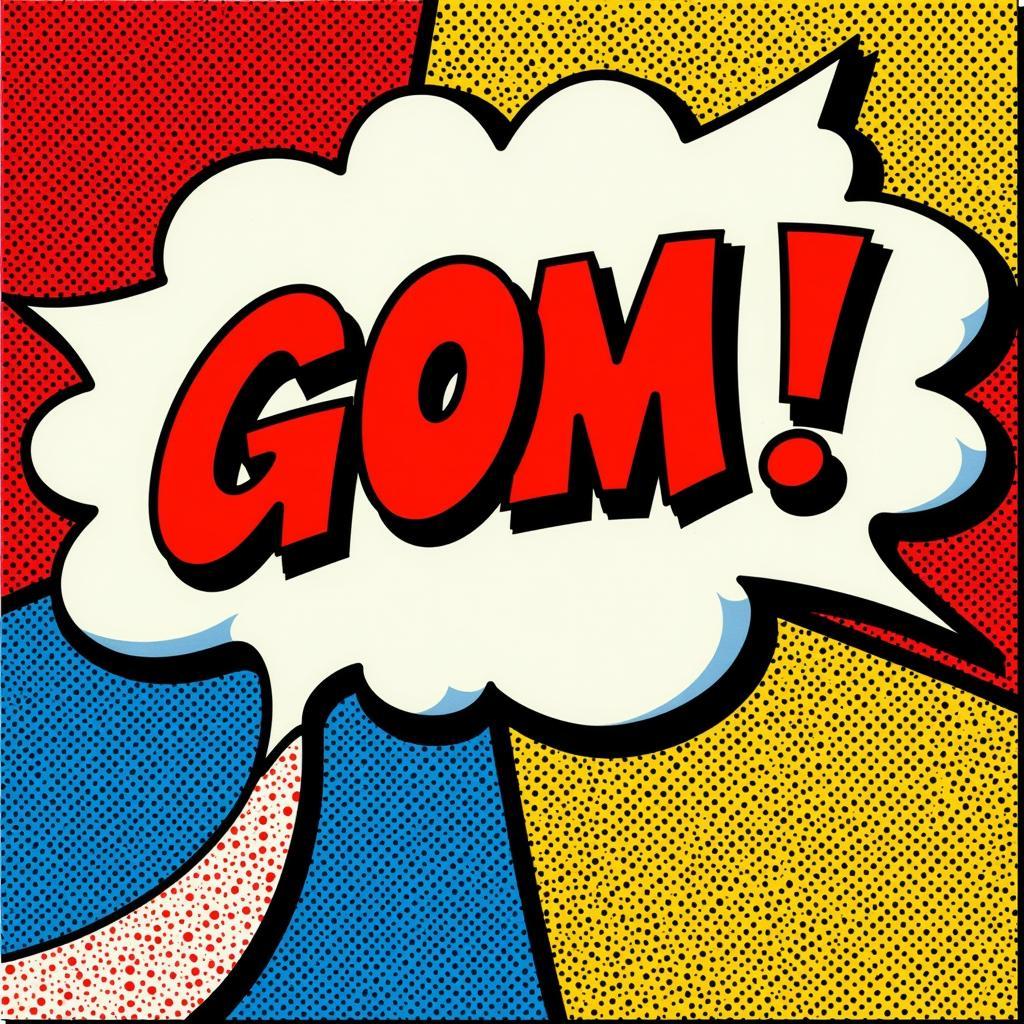Consumerism and Pop Art: A Love Story or a Critique?
Pop art exploded onto the art scene in the 1950s and 60s, challenging traditional notions of what art could be. This movement, with its bold colors, repetition, and everyday imagery, had a complicated relationship with the rising force of consumerism. Were pop artists celebrating the allure of mass-produced goods or launching a sly critique on the materialistic tendencies of society? Let’s delve into the heart of this intriguing dynamic.
More Than a Soup Can: Deciphering the Pop Art Language
Pop art embraced the mundane, elevating commonplace objects into the realm of fine art. Think Andy Warhol’s iconic Campbell’s Soup Cans or Roy Lichtenstein’s comic book panels. By appropriating images from advertising, mass media, and consumer products, these artists forced viewers to confront the pervasiveness of consumer culture in their lives.
But was this embrace a form of glorification? Some argue that pop art’s use of vibrant colors and playful imagery contributed to the romanticization of consumer goods. The very act of transforming these objects into art elevated their status, potentially making them even more desirable.
However, a closer look reveals a layer of irony and social commentary often embedded within these works. The repetition, for example, can be interpreted as a critique on mass production and the homogenization of culture. By presenting rows upon rows of identical soup cans or Coca-Cola bottles, artists like Warhol seemed to question the value and meaning we attach to mass-produced items.
Behind the Glitz: Consumerism as Muse and Critique
 Roy Lichtenstein's Pop Art
Roy Lichtenstein's Pop Art
To understand the relationship between Consumerism And Pop Art, it’s important to consider the socio-cultural context in which this movement emerged. Post-war America witnessed an unprecedented economic boom, leading to a surge in consumer spending and the rise of mass media. Pop artists, immersed in this environment, responded to this shift by incorporating the visual language of advertising and popular culture into their work.
Artists like James Rosenquist, known for his large-scale billboard-inspired paintings, used the language of advertising – bold fonts, fragmented imagery, and seductive slogans – to highlight the manipulative power of marketing and its influence on desires and aspirations.
Beyond the Surface: Pop Art’s Enduring Legacy
The relationship between consumerism and pop art remains a subject of debate. Was it a celebration, a critique, or perhaps a complex interplay of both? While definitive answers remain elusive, what’s undeniable is that pop art sparked a conversation about the role of mass media, consumer culture, and their impact on society.
This artistic movement challenged traditional art forms and pushed boundaries, prompting viewers to question their surroundings and the messages bombarding them daily. And in that sense, pop art’s legacy extends far beyond the canvas, serving as a timeless reflection on the ever-evolving relationship between art, consumerism, and the human experience.
FAQs
1. What are the key characteristics of pop art?
Pop art is characterized by bold colors, repetition, everyday imagery drawn from popular culture and mass media, and the use of techniques like silkscreen printing.
2. Who are some of the most famous pop artists?
Key figures in the pop art movement include Andy Warhol, Roy Lichtenstein, Jasper Johns, Robert Rauschenberg, Claes Oldenburg, and James Rosenquist.
3. How did pop art reflect the cultural changes of the 1950s and 60s?
Pop art emerged during a time of significant social and economic change, marked by the rise of consumerism, mass media, and popular culture. The movement reflected these changes by incorporating imagery and themes from advertising, television, and everyday life into works of art.
4. Did pop art criticize or celebrate consumerism?
The relationship between pop art and consumerism is complex and open to interpretation. Some argue that the movement celebrated consumer culture, while others view it as a critique of mass production and its effects on society.
5. How did pop art influence art and design after the 1960s?
Pop art’s influence continues to be felt in contemporary art, graphic design, fashion, and advertising. Its bold aesthetics, use of everyday imagery, and exploration of popular culture have left an indelible mark on visual culture.
Need Help Exploring the World of Art?
Contact us at Phone Number: 02462573573, Email: danteum@gmail.com or visit us at Savico Megamall, 7-9 Đ. Nguyễn Văn Linh, Gia Thụy, Long Biên, Hà Nội 10000, Việt Nam. Our customer support team is available 24/7 to assist you.
Interested in learning more about specific pop artists or art forms? Check out these related articles on our website: sue tsai art, money canvas art, gum art, andy warhol commercial art, jay lynch art.



